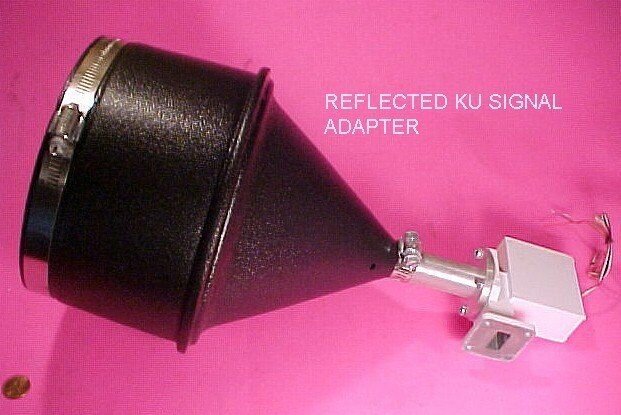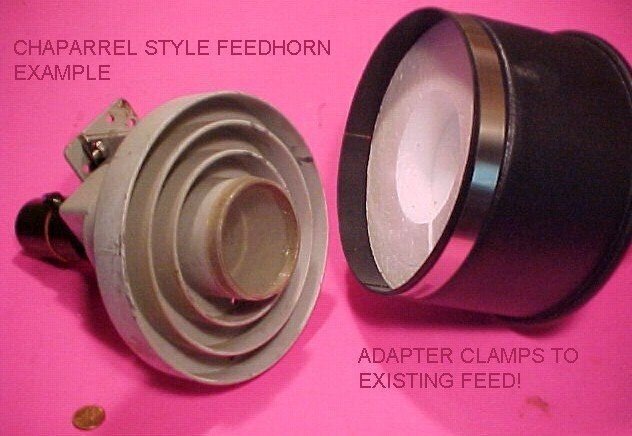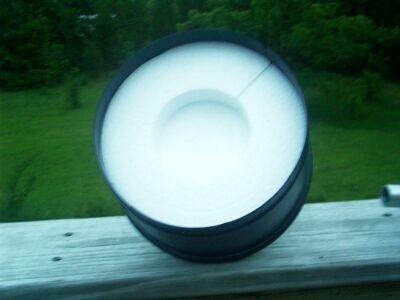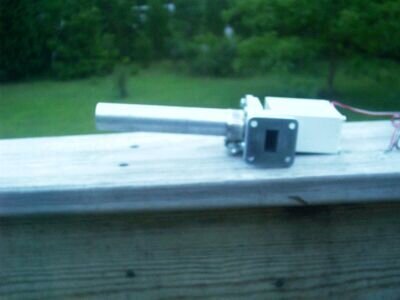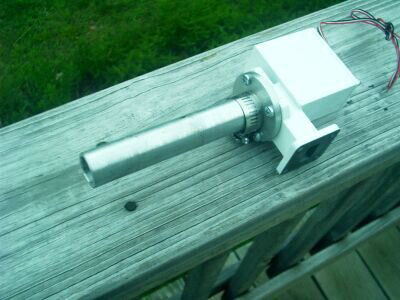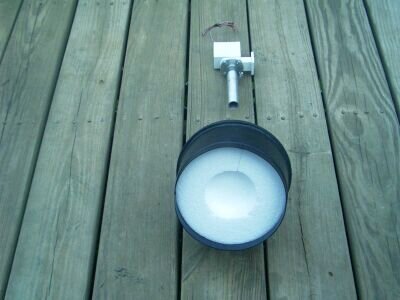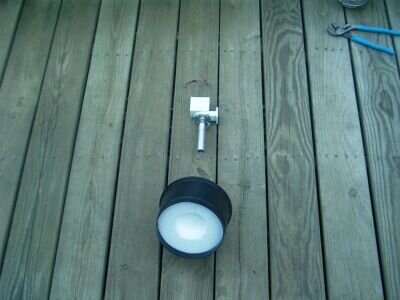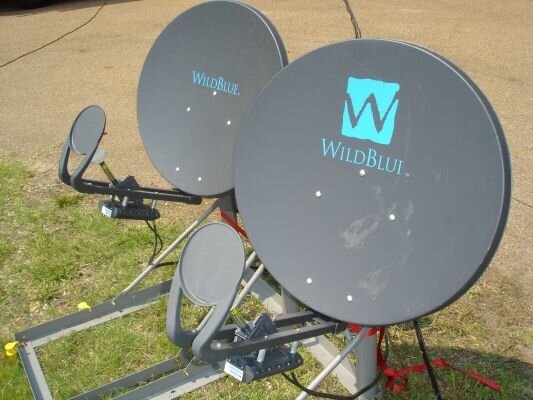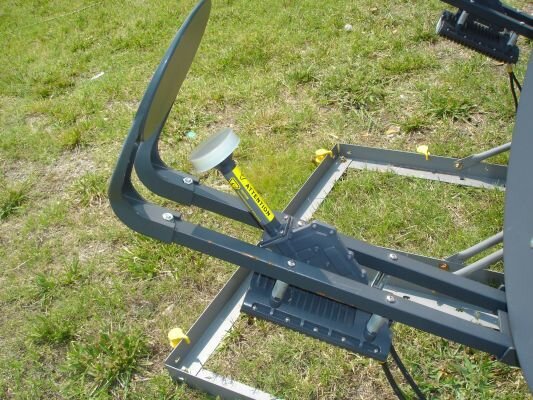What the heck is this? Originally found here. Sorry for the ALL CAPS-- that was the original description.
NEW, CREATED FOR INSTALLATION ON CHAPARREL STYLE C-BAND FEEDHORNS BACK IN THE DAY, ONCE MOUNTED ON THE EXISTING FEEDHORN WITH THE SUPPLIED STAINLESS STEEL CLAMP THIS ADAPTER IS TRANSPARENT TO C BAND SIGNAL YET TRAPS THE REFLECTED KU SIGNAL ALLOWING C AND KU OPERATION ON THE SAME DISH. YOU WILL STILL NEED A KU LNB. HOBBYIST SEEM TO CONTINUE TO FIND USES FOR THESE AND I WILL CONTINUE TO SELL THEM TILL GONE, THE TRICK WAS IN THE BLACK PLASTIC FEED HORN IT UTILIZED A BUILT IN REFLECTION DEVICE TO MAKE THE TRICK IDEA WORK.
NEW, CREATED FOR INSTALLATION ON CHAPARREL STYLE C-BAND FEEDHORNS BACK IN THE DAY, ONCE MOUNTED ON THE EXISTING FEEDHORN WITH THE SUPPLIED STAINLESS STEEL CLAMP THIS ADAPTER IS TRANSPARENT TO C BAND SIGNAL YET TRAPS THE REFLECTED KU SIGNAL ALLOWING C AND KU OPERATION ON THE SAME DISH. YOU WILL STILL NEED A KU LNB. HOBBYIST SEEM TO CONTINUE TO FIND USES FOR THESE AND I WILL CONTINUE TO SELL THEM TILL GONE, THE TRICK WAS IN THE BLACK PLASTIC FEED HORN IT UTILIZED A BUILT IN REFLECTION DEVICE TO MAKE THE TRICK IDEA WORK.


